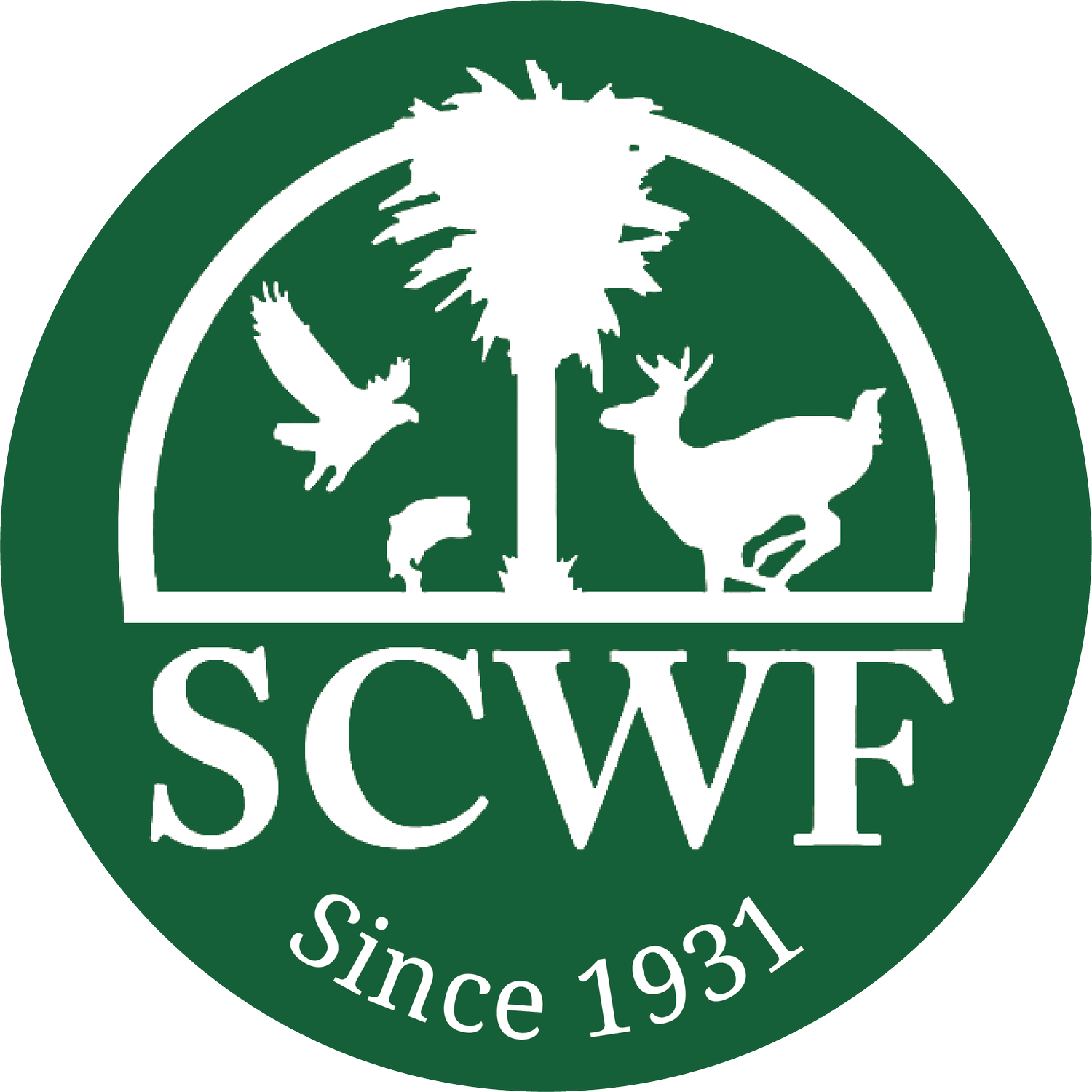by Brantley Bissette, SCWF Education Outreach Intern
North Atlantic right whale mother and calf (Brian Skerry for National Geographic).
The North Atlantic right whale is one of South Carolina’s most endangered species. They are also likely one of the most unfamiliar. With their recent prevalence in local and national news, let’s take a quick look at what exactly is happening with this whale species and how South Carolina plays a critical role in their life history.
These robust, jet-black whales visit our state’s coastal waters – the northern half of their winter calving grounds which extend south to Florida – between fall and spring (during the summer months, they can be found in their feeding grounds off the northeast United States and Canada). This annual migration along the heavily populated east coast leaves the species at heightened risk of negative human-induced interactions such as vessel strikes and entanglement in fishing gear, and as a result of these persistent threats the population has seen steep declines in recent decades.
Since the 2017 onset of what marine mammologists refer to as an “Unusual Mortality Event,” the population has been reduced to just over 350 animals. Because reproductive-age females represent only about 70 of these remaining individuals, the population cannot sustain the loss of multiple whales in any given year. So far in 2021, unfortunately, two whales have already been lost to presumptive vessel strike and entanglement, the latter being found just off Myrtle beach last weekend. Should this trend continue, we may witness the extinction of this iconic species within our lifetime.
Under the direction of NOAA Fisheries, several measures have been established to protect these charismatic cetaceans. Vessel speed restrictions and mandated reporting for large ships entering critical habitat reduce the risk of collisions with right whales, who spend more time at the surface than other species. In the northeast, localized fisheries have improved fishing gear such as lobster trap lines to reduce the risk of long-term entanglement. As a critical migration and calving grounds, South Carolina makes up part of the Mid-Atlantic Seasonal Management Area. SCWF and several other regional environmental nonprofits, together with the Southern Environmental Law Center, have submitted commentary to the federal government urging a more active and immediate implementation of these protective measures.
South Carolina makes up a large portion of the Mid-Atlantic Seasonal Management Area (NOAA Fisheries).
Now a primary concern for scientists, policymakers and engaged citizens up and down the coast, hope remains for the recovery of the species. This year, 15 new North Atlantic right whales have been observed, marking the most productive calving season since 2016, and a significant improvement from the last four seasons, during which a combined total of just 22 calves were born. Should we continue to see an increase in calving rates along with an increased enforcement and effectiveness of protection efforts, we will be able to cherish this iconic species for generations to come.



